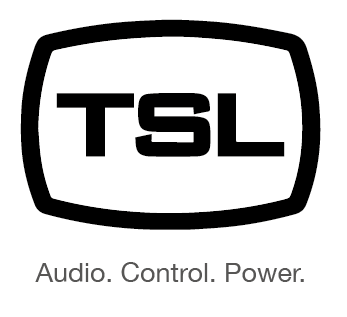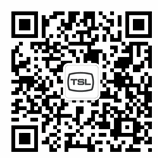THE EVOLUTION OF AUDIO MONITORING
By Stephen Brownsill, Audio Product Manager

Every user, production, environment, operation and application is different, meaning that universal tools simply cannot provide the versatility required by today’s customers. Audio monitoring continues to evolve as productions advance, with the need for multi-channel monitoring, configurable metering as well as the ability to adhere to the latest loudness guidelines remaining at the top of the must-have list. Production requirements are becoming ever more challenging, with new and more complex shows and events making it ever more difficult for customers to make the right investment in equipment and technology. An audio monitor that satisfies your requirements today, may not satisfy your requirements in the future, so selecting a platform whose functionality can adapt and grow over time through software upgrades and optional licenses, serves to protect your investment by allowing the same audio monitor to be re-deployed to different applications and environments, and configured for different user requirements.
The Engineer and Operator Stamp of Approval
Audio monitoring units can often fail to satisfy the requirements of both engineers and operators across applications. A feature rich and powerful audio monitor designed for the most demanding user or application can often prove too daunting or unnecessarily difficult to use for those who simply need to select and hear the audio they require. An operator or engineer managing incoming lines will have different audio monitoring requirements to an operator or engineer working in a QC environment, which will then differ again from an operator or engineer in a studio or OB truck.
When production staff, many of whom may be freelance, prepare for a show or event, they often have little time to invest in familiarizing or re-training themselves with the equipment they are expected to work with. With an audio platform designed to allow for different levels of interaction, control and working preference, production staff are free to focus on the task at hand.
Audio Monitoring by Application
A key challenge for any audio solution is to create and present an operational experience that is both simple and intuitive, regardless of the method being used to carry audio throughout a broadcast chain. An audio monitoring unit that can be easily switched between different modes of audio measurement, presentation and control can aid all operators and engineers equally, even though the requirements are very different.
In a fast-paced OB environment, it is essential that operators have reliable, flexible tools that fit seamlessly into the production process that monitors feeds to ensure that they meet the correct channel assignment. It should also be able to check the integrity of the different mixes, monitor the multi-channel streams of media cut for playback, have back-up in the unlikely event that the main mixer should fail, check video and audio circuits within the racks area and at the tailboard.
A typical broadcast TV production workflow often demands that operators have the ability to hear audio from diverse sources such as routers, VTR/servers, talent and communications. The format of incoming audio signals may vary considerably with channel configurations in surround sound, stereo or mono, with multiple languages, clean FX channels and multiple program mixes further complicating the situation. Signals vary dynamically during production and setups alter completely from show-to-show, audio monitoring that is versatile is key for this application.
In a newsroom that produces fast turnaround 24-hour news, audio products can be used to monitor the audio for level and technical compliance in production and the racks room, to monitor presenters prehear and comms circuits as well as to ensure loud and clear location reports from the field.
Master Control is the most technically complex area of a broadcast facility. The Master Control Room requires features like downmixing, loudness measurements and audio delay for checking lip sync. A comprehensive toolbox for analyzing whichever audio format enters or exits the facility, and the ability to connect an external screen ensures that operators have precise visual feedback as part of their monitor stack.
QC and Ingest check and log loudness levels of the outgoing audio content. Playout technicians use audio monitors to listen to the outputs through their full range loudspeaker system, while in the transmission area, audio monitoring allows the operators to conduct a final check.
Addressing the Challenges of IP
In addition to a wide range of application needs, an audio monitoring solution that supports both traditional SDI and IP infrastructures is an important consideration for those looking to make a hybrid transition to an IP-based workflow and infrastructure. At the very least, those needing to manage and monitor audio and video within an IP infrastructure need a set of quick and easy-to-use controls that are made available by an intuitive and familiar interface. This enables the user to monitor and manipulate audio in the same manner that they have grown used to when working in traditional SDI environments.
Whilst it is important to be able to hide the complexities of the IP transition for users, the move to IP will mean that audio engineers need to more deeply understand device control. Devices such as an audio monitor will no longer be ‘passive,’ instead they will communicate directly with the switch to request flows, as directed by the control system, rather than being controlled by a traditional SDI router control system. This new control paradigm throws up many issues, mainly around interoperability, and will be reliant on new standards, such as the work being done by AMWA on their NMOS control specifications that allow for device discovery and registration, device connection and management, and event and tally management.
Additionally, a fully ST-2110 compliant audio monitor can offer features and functions that go far beyond those expected from a traditional audio monitoring unit, with features such as Packet Counters to help diagnose potential issues in your network by maintaining confidence that your ST-2110 sources are being received, or PTP Status including MAC addresses that can be viewed directly from the front panel to assist with network troubleshooting.
Whatever the application or infrastructure, success for any broadcaster in these new and unfamiliar times will be reliant on working closely with vendors and systems integrators to share experience and technical knowledge. Building solutions that provide added value to customers and allows them to perform tasks with ease and to the highest quality sits at the heart of TSL Products. This philosophy means customers can move ‘’beyond the box” to maintain technical excellence and keep pace with the latest technologies and industry standards. Any new platform from TSL comes complete with a roadmap designed in response to today’s rapid changing environments alongside the world’s leading facilities and technical partners. Most of all however, creating a user-focused experience, regardless of the advances in underlying technology, is paramount to customer satisfaction and remains our key focus.

